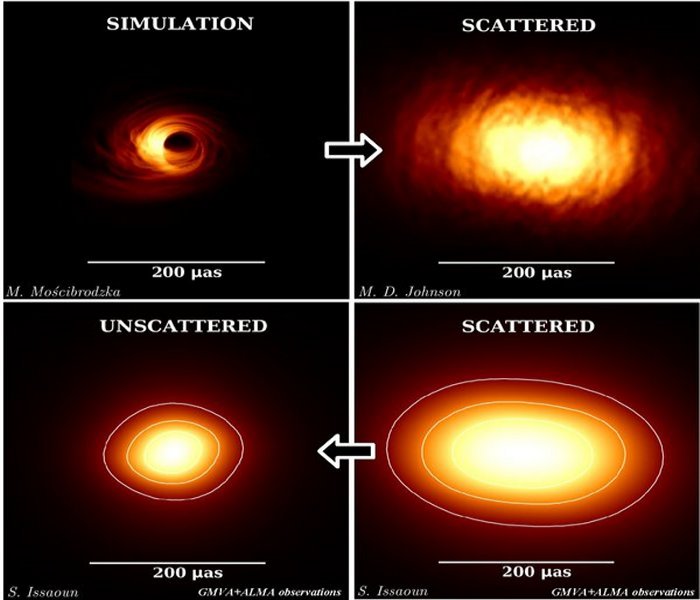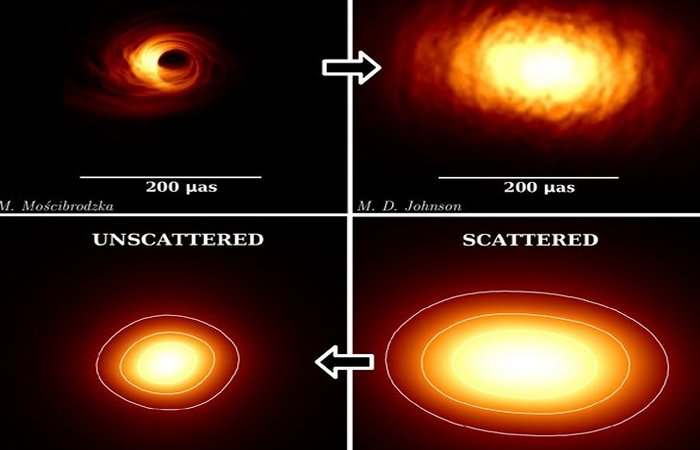MessageToEagle.com – Astronomers have found that the emission from the supermassive black hole Sagittarius A* (Sgr A*) at the center of our Galaxy comes from a smaller region than previously thought.
This may indicate that a radio jet from Sgr A* is pointed almost directly towards the Earth.
So far, a foggy cloud of hot gas has prevented astronomers from making sharp images of the supermassive black hole Sgr A* and causing doubt on its true nature. They have now included for the first time the powerful ALMA telescope in northern Chile into a global network of radio telescopes to peer through this fog, but the source keeps surprising them: its emission region is so small that the source may actually have to point directly at the direction of the Earth.

© S. Issaoun, M. Mościbrodzka, Radboud University/ M. D. Johnson, CfA
Now, researchers have succeeded in mapping out the exact properties of the light scattering blocking our view of Sgr A*. The removal of most of the scattering effects has produced a first image of the surroundings of the black hole and this unscattered image has allowed the team to constrain theoretical models for the gas around Sgr A*. The bulk of the radio emission is coming from a mere 300 milllionth of a degree, and the source has a symmetrical morphology.
This may indicate that the radio emission is produced in a disk of infalling gas rather than by a radio jet,” Sara Issaoun, graduate student at the Radboud University Nijmegen in the Netherlands, who leads the work and has tested several computer models against the data, explains in a press release.
“However, that would make Sgr A* an exception compared to other radio emitting black holes. The alternative could be that the radio jet is pointing almost at us.”
The German astronomer Heino Falcke, Professor of Radio Astronomy at Radboud University and PhD supervisor of Issaoun, calls this statement very unusual, but he also no longer rules it out. Last year, Falcke would have considered this a contrived model, but recently the GRAVITY team came to a similar conclusion using ESO’s Very Large Telescope Interferometer of optical telescopes and an independent technique.
“Maybe this is true after all”, concludes Falcke, “and we are looking at this beast from a very special vantage point.”
Supermassive black holes are common in the centers of galaxies and may generate the most energetic phenomena in the known universe. It is believed that, around these black holes, matter falls in a rotating disk and part of this matter is expelled in opposite directions along two narrow beams, called jets, at speeds close to the speed of light, which typically produces a lot of radio light.
“Whether the radio emission seen from SgrA* originates from a symmetrical underlying structure, or is intrinsically asymmetric is a matter of intense discussion”, explains Thomas Krichbaum, member of the team.
Read more – here
MessageToEagle.com







